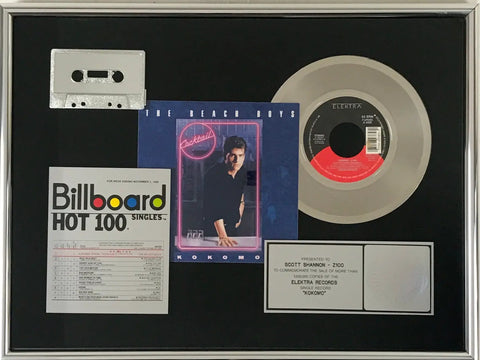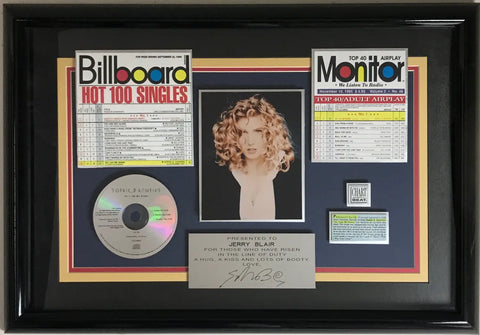The history of top 10 record charts is a fascinating journey that reflects the evolution of the music industry, changing tastes, and technological advancements. These charts have provided insights into the popularity of songs and artists, shaping the way we consume and appreciate music.
The concept of record charts dates to the early 20th century when sheet music sales were used to gauge the popularity of songs. However, it wasn't until the 1940s that the modern top 10 record chart gained prominence.
One of the earliest iconic record charts was the "Top 10 Juke Box Records," introduced in 1944 by Billboard. It highlighted the songs that were most played on jukeboxes, offering a glimpse into public music preferences.
Charts published by publications from Billboard, Cashbox and Record World in the United States played a pivotal role in the chart evolution that followed.
The advent of television brought about shows like American Bandstand, hosted by Dick Clark, which was launched in 1957 and became a network TV staple. The production showcased the top songs and invited artists to perform, further influencing the charts.
The syndicated radio series American Top 40 hosted by Casey Kasem, which began airing in 1970, helped cement Billboard's dominance as the go-to chart for the industry since the show exclusively used their chart.

Decca Records artist Ricky Nelson scored the first Billboard #1 hit on the publication's newly launched Hot 100 chart
The Billboard Hot 100, which was originally launched in 1958, revolutionized the music industry by incorporating radio airplay and record sales to determine chart positions. The first #1 song of this new Hot 100 chart was "Poor Little Fool" by Ricky Nelson, which reached the top spot on August 4, 1958.
In the beginning, 45 single sales were weighted more heavily than radio airplay since most consumers of music bought singles and it was thought to better reflect consumer preferences than, for example, requests made to radio DJ to hear a song on the radio. Later in the 60s, as more music was purchased in the album format and less singles were released, radio airplay was weighted more heavily.
The 1960s marked a significant era for top 10 record charts. The British invasion led by bands like The Beatles and The Rolling Stones reshaped the global music landscape. Their dominance on the charts demonstrated the power of youth culture and how it could sway musical trends. This era also saw the rise of Motown, which predominantly released Soul and R&B music that increasingly landed on mainstream charts.

On February 1, 1964, the Beatles topped the Billboard Hot 100 chart for seven weeks with "I Want To Hold Your Hand", which also became the #1 song that year
As the music industry diversified, so did the charts. Genre-specific charts began to emerge, catering to the growing popularity of rock, pop, R&B, country, and other genres. The advent of digital technology in the late 20th century brought about further changes. The introduction of digital downloads and later, streaming services, had a profound impact on chart methodology, reflecting the changing methods of music consumption.
One rule established from the beginning of the Hot 100 chart’s history required that a track had to be released as a single to be included. However, that requirement was eliminated on December 5, 1998, allowing album cuts to appear on the chart. Thereafter the chart became a “songs” chart rather than “singles” chart. This was due to a trend in the 1990s that record labels would promote songs to radio without ever releasing them as singles.
Examples of songs that became #1 hits on radio airplay charts in the 90s that were never released as singles -- thus barring them from appearing on the Hot 100 -- include The Rembrandts 1995 song "I'll Be There for You", the 1996 No Doubt hit from No Doubt "Don't Speak", Natalie Imbruglia’s "Torn" in 1997, and the Goo Goo Dolls song "Iris" in 1998.

Starting in the 1980s, Billboard Hot 100 chart excerpts would sometimes be included in official RIAA awards, like on this one for The Beach Boys "Kokomo"
Starting on February 12, 2005, the tracking of paid digital downloads from such Internet services as iTunes, Musicmatch, Rhapsody, and others was included as part of the formula determining chart positions of tracks.
On August 11, 2007, Billboard began incorporating weekly data from streaming media and on-demand services into the Hot 100. At first this included AOL Music and Yahoo! Music, while later streaming data from Spotify and YouTube, which have become two of the most dominant platforms for consumers to stream music, also became part of the mix.
This multidimensional approach has worked over the years to provide a comprehensive view of a song's popularity.

Award plaques that highlight Billboard chart accomplishments are also popular with collectors, like this one for Sophie B. Hawkins' 1995 hit "As I Lay Me Down"
Moving into the 21st century, charts have become more dynamic and responsive due to the immediacy of online sources of music downloading and listening. The rise of social media platforms, such as YouTube and TikTok, has provided a new way for songs to gain popularity rapidly. Viral challenges and dance trends can propel songs to the top of the charts in a matter of weeks, showcasing the ever-evolving nature of music trends.
The global nature of music consumption also led to the emergence of international record charts. The "Global 200" and "Global Excluding U.S." charts by Billboard reflect the worldwide popularity of songs, emphasizing the interconnectedness of music across borders.
Despite their enduring popularity, top 10 record charts have faced criticism for potentially limiting musical diversity and creativity. Some argue that the focus on chart performance might overshadow the artistic value of music, encouraging a formulaic approach to songwriting and production.
In recent years, debates have arisen regarding the accuracy of chart data due to practices like streaming manipulation. As the music industry adapts to these challenges, chart methodologies continue to evolve to ensure fair representation of a song's popularity.
Regardless the criticisms that chart creation methodologies have faced over the years, which artists have consistently come out on top of the heap? At least Hot 100 chart-wise, here are the top ten Hot 100 charting artists of all time, calculated from data covering the period from 1958 to 2021 according to Billboard:
1. The Beatles2. Madonna
3. Elton John
4. Elvis Presley
5. Mariah Carey
6. Stevie Wonder
7. Janet Jackson
8. Michael Jackson
9. Whitney Houston
10. Rihanna
The history of top 10 record charts showcases the evolution of the music industry, from early sheet music sales to the digital streaming era. These charts have played a significant role in shaping music trends, reflecting changing tastes, technological advancements, and cultural shifts.
While they provide valuable insights into the popularity of songs and artists, they also raise questions about the balance between commercial success and artistic value in the ever-changing landscape of the music world. The fact remains, however, that they have been used for decades by the music industry to measure the marketplace success of recorded music.
Check out music memorabilia available here at MusicGoldmine.com here.
Want more content like this? If you're not a subscriber already, sign up for our free MusicGoldmine newsletter which comes out every two weeks. Go here to sign up.
Be the envy of all your friends! Get MusicGoldmine.com Music History in your Facebook feed each day. Just follow us on Facebook here.
All photos by MusicGoldmine.com except Ricky Nelson image: Public domain



